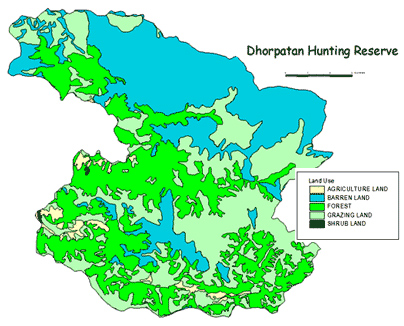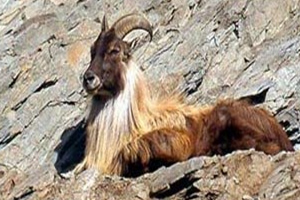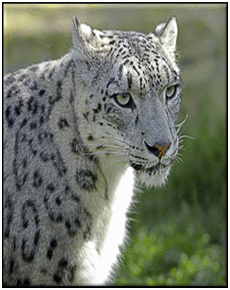- Home |
- Why With Us |
- About Us |
- Booking |
- Contact Us |
- Site Map
- Home
-
Nepal
-
Trekking
- Arun Valley with Gokyo Lakes
- Everest Base Camp Trek
- Everest- A Living Culture Exploration
- Everest Explore
- Everest Base Camp (via Thame) Trek
- Everest Base Camp with Kala Patthar
- Everest Comfort Trek
- Everest High Passes with Ama Dablam Base Camp
- Everest Mani Rimdu Festival Trek
- Everest Nagpa La Trek
- Everest with three high passes
- Gokyo Ri, Chola Pass & Chukung Ri with Kala Patthar
- Gokyo with Everest Base Camp
- Jomsom - Muktinath
- Jomsom - Muktinath
- Khayar Lake Trek
- Manaslu and Tsum Valley with Larkya La
- Upper Mustang Trek
- Manaslu High Circuit
- Manaslu, Tilicho Pass & Upper Mustang
- Annapurna Base Camp Trek
- The Annapurna Circuit Trek
- Annapurna Panorama
- Nar and Phu Valley Trekking
- Nepal Rhododendron Trek
- Royal Trek
- Saribung Trek and Expedition
- Annapurna Sanctuary Trek
- The Annapurna Sunrise Trek
- Expedition
-
Rafting
-
Peak Climbing
-
Tours
- Kathmandu-Chitwan-Jungle Tour with visit to Pokhara
- Dawn to Dusk Tour
- Historical, Natural & Cultural Tour with Camping
- Kathmandu Valley Temple Tour
- Temple - Panorama - Jungle Tour
- Taste of Nepal
- Central Nepal Tour
- Explore Nepal Tour & Trek
- Nepal Cross-country Tour
- Best of Nepal Tour & Treks
- Kathmandu valley rim Tour & Treks
- Nepal Culture Tour
- Introduction to Nepal Tour & Treks
- Nepal at a glance Tour & Treks
- Wonders of Nepal Tour & Treks
- Glimpses of Nepal Tour & Treks
- Through the Silhouette Tour & Treks
- Tent and Temple Tour
- Kathmandu-Chitwan-Pokhara Tour
- Historical, Cultural City and Jungle Tour
- Nepal Wildlife Tour
- Nepal Panorama Historical Tour
- Nepal Adventure Tour
- Nepal Pilgrimage Tour
- Ghalegaun-Ghanapokhara Homestay Tour
- Jungle Safari
- Adventure Sports
-
Trekking
- Tibet
-
Bhutan
-
India
- Yoga Tour
- About Us
-
The Great Himalayan Trail
-
Short Tours/Treks

Dhorpatan Hunting Reserve
Nepal's only protected area which allowed controlled big game hunting, the Dhorpatan Hunting Reserve is spread over 1325 sq km in Myagdi and Baglung district, below the Dhaulagiri range in west Nepal. The altitude here begins from 3,000 m and reaches as high as 7000 m. The main attraction for big game hunters is the Blue Sheep, which is abundant in the area. Hunters also get pheasants and partridges in viable populations for hunting.
in Myagdi and Baglung district, below the Dhaulagiri range in west Nepal. The altitude here begins from 3,000 m and reaches as high as 7000 m. The main attraction for big game hunters is the Blue Sheep, which is abundant in the area. Hunters also get pheasants and partridges in viable populations for hunting.
Details about the Reserve:
- The reserve extends over an area of 1325 sq. km and is the only hunting reserve in the country to meet the sports hunting needs of Nepalese and foreign hunters of blue sheep and other game animals. The higher elevations remain snow-capped throughout the year. Altitudes vary from 3000 m. to more than 7000 m. The flat meadows above tree line (4000 m), locally known as Patan, is divided into six blocks for hunting management purposes.
- The reserve is surrounded by villages on all sides except the north. Local people depend on the reserve to meet their requirements for wood, fuel wood, fodder, and pasture. The refugee camp near the reserve headquarters has put more human pressure in the forest. Every year livestock grazing activities begin from February and last until October. More than 80,000 livestock enter the reserve.
- The majority of people belong to the Mongoloid race, including Magar. Thakali, and Gurung, Amalgamation of different ethnic groups has resulted in a mixed pattern of cultures.
- Dhorbaraha, a Hindu religious place on the banks or Uttarganga River near Dhorpatan, is in Fagune bloc. Every year on the day of "Janai Purnima" in August, a religious fair is held here which is attended by many local devotees. The magnificent view of Dhaulagiri Himal from Barse. Dogari and Gustung blocs are exceptional. Snag and Sundaha bloc are rich in wild animals.
Features
The higher elevations remain snow-capped throughout the year. Altitudes vary from 3000 m to more than 7000 m. The flat meadows above tree line (4000 m), locally known as Patans, are important for animals like the blue sheep and other herbivores. The reserve is divided into seven six blocks for hunting management purposes.The reserve is surrounded by villages on all sides except the north.
The reserve is divided into seven six blocks for hunting management purposes.The reserve is surrounded by villages on all sides except the north.
Climates
The monsoon fasts until the beginning of October. Day time temperatures are very low during winter due to strong winds. Higher elevations remain covered with cloud in the morning; later clouds are cleared by the wind. Snow may occur even at low elevation until early April, however, it soon melts. The best time to visit the reserve is March-April.
Flora & Fauna
The reserve is characterized by alpine, sub-alpine and high temperate vegetation. Common plant species include fir, pine, and birch, rhododendron, hemlock, oak, juniper and spruce. Pasturelands occupy more than 50 % of the total area of the reserve at higher elevation.
The reserve is one of the prime habitats of blue sheep, a highly coveted trophy. Other animals found are: leopard, goral, serow, Himalayan tahr, Hirnalayan black bear, barking deer, wild boar, rhesus macaque, langur and mouse hare. Pheasants and partridge are common and their viable population in the reserve permits controlled hunting. Endangered animals in the reserve include: Musk deer, Wolf, Red panda, Cheer pheasant and Daphne. The Department of National Parks and Wildlife Conservation  issue the hunting license.
issue the hunting license.
Facilities
Local people are allowed to collect limited quantities of fuel-wood for their home use. Visitors are requested to be self-sufficient with fuel (Kerosene) before entering the reserve. Since no medical facilities are available in the reserve, it is suggested that visitors carry a comprehensive first-aid kit including medicines for intestinal disorders. Two hotels/lodges catering simple Nepali foods are located at Chhyantung near Dhorpatan.
How to get there
Public bus service is available from Kathmandu to Tansen-Tamgash Gulmi from where the reserve HQ is a three-day walk via Burtibang.
Air service links Baglung from Kathmandu and Pokhara. The reserve HQ could be reached in 4 days walk from Balewa-Baglung.
Public bus can be taken to Baglung from Pokhara followed by 4 days walk via Baglung Beni-Darbang-Lumsung and Jaljala to reach Dhorpatan.Chartered service helicopter may be available on request from Kathmandu.
Places of interest
Dhorbaraha a Hindu religious place on the banks of Uttarganga River near Dhorpatan is in Fagune block. Every year on the day of "Janai Purnima" in August, a religious fair is held here which many local devotees attend. The magnificent view of Dhaulagiri Himal from Barse, Dogari and Gustung blocks are exceptional, Seng and Sundaha block are rich in wild animals.
Some Important Points:
Local people are allowed to collect limited quantities of fuelwood for their use. Visitors are requested to be self-sufficient with fuel before entering the reserve. Since no medical facilities are available in the reserves, it is suggested that visitors carry a comprehensive first-aid kit including medicines for intestinal disorders. Two hotels/lodges catering simple Nepali foods are located at Chhyantung near Dhorpatan.
Entry Fees into Dhorpatan Hunting Reserve:
Reserve fee per person per entry:
- For Nepali Nationals Rs 20
- For SAARC Nationals Rs 200
- For Foreign Nationals Rs 500
- Children under 10 years free

National Parks

Wildlife Reserve

Trekking in Nepal
Expeditions In Nepal
Rafting in Nepal
Tours in Nepal
All rights reserved.


